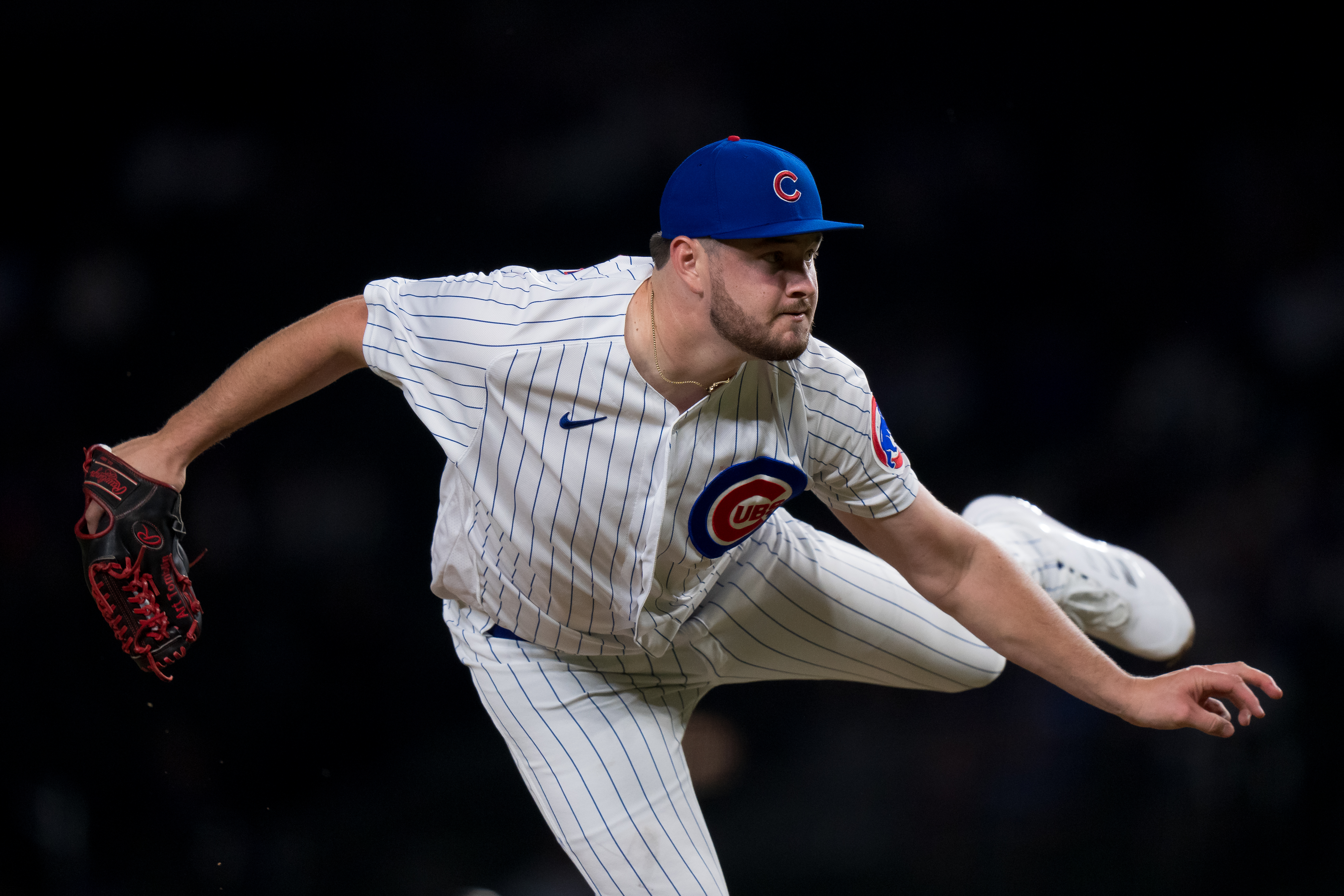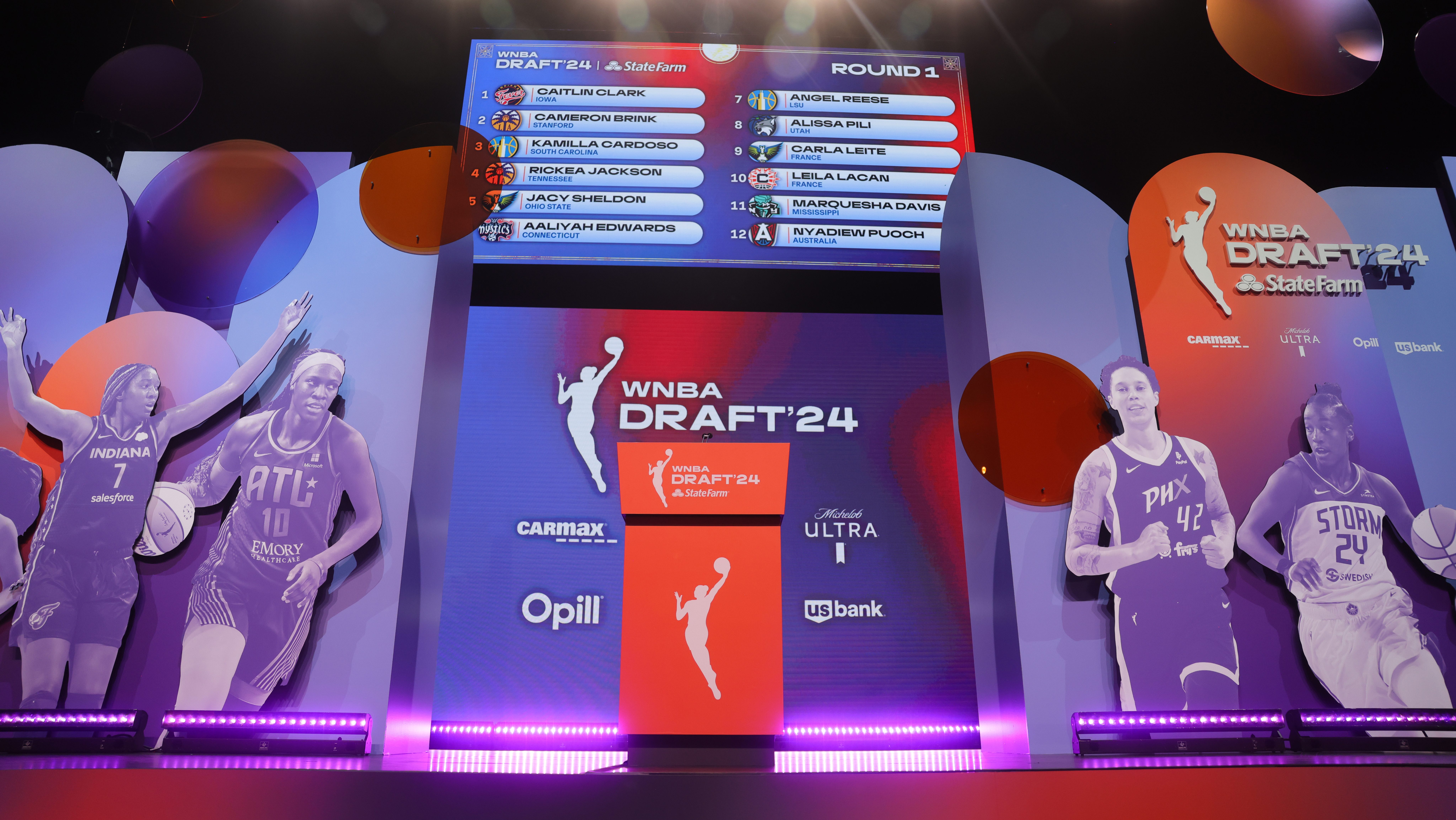
For the third straight year, the Portland Trail Blazers’ season ended in demoralizing fashion. Another sweep, with the Golden State Warriors once again holding the broom just as they did in 2017. The Blazers did manage to steal one game against the Warriors in 2016, but that playoff victory comes with an important footnote: Stephen Curry sat out with a knee injury.
That’s been the story for the Blazers. After falling to 0-10 against the Warriors in the playoffs with Curry in uniform, it’s clear Portland hasn’t figured out this team.
Well, guess what? No one else has either.
Since Steve Kerr took over in 2015, the Warriors have won an astounding 17 of 18 playoff series. The one team that beat them -- the 2016 Cleveland Cavaliers -- needed LeBron James, a Draymond Green suspension, and last-second heroics in Game 7 to pull off the upset in the NBA Finals.
Just when the Cavs thought they may have solved the riddle, the Warriors added Kevin Durant and dismantled the Cavs over the next two Finals. Following a 2017 sweep, James packed his bags for Hollywood.
Should the Blazers try going in a different direction just like LeBron did?
Let’s get into that and two other big questions the Blazers offseason.
News
1. Do the Blazers blow it up?
Under contract for two more seasons, Damian Lillard and CJ McCollum won’t be partaking in the free-agent frenzy this summer. But even if they did have the ability to leave Portland, they’d have little reason to flee like Durant in 2016 or James in 2018. The Warriors have that effect on people.
It may not feel like it now, but this was the best realistic outcome for the Blazers. Vegas preseason projections saw a 42-win team, not enough to even make the playoffs. Multiple media outlets agreed with that grim outlook, envisioning a team that would take a huge step back after a 49-33 season in 2017-18.
Led by Logo Lillard’s attack, the Blazers didn’t just make the playoffs, they improved to 52-30 and became one of the last two West teams standing.
That they managed to fight this far should be the legacy of this team. The owner, Paul Allen, died two days before the season opener. McCollum missed nearly a month at the end of the season with a knee injury. Jusuf Nurkic, the starting center and a legitimate candidate for Most Improved Player honors, broke his leg three weeks before the playoffs.
The Blazers could have huddled up, put their hands together and chanted “1-2-3, Cancun!” and it would be an understandable reaction given their recent history of consecutive first-round sweeps. Instead, the Blazers changed the narrative of the franchise, marched to the Western Conference finals and took down three superstars in Russell Westbrook, Paul George and Nikola Jokic along the way.
Nurkic’s injury was devastating for the Blazers’ hopes, but on one level, it may be a blessing in disguise for this group. Clearly overmatched against the Warriors, the absence of Nurkic gives them fuel for redemption next season. Maybe Nurkic doesn’t stop the Draymond Green show in this series, but the Warriors clearly didn’t think much of the Blazers’ depleted frontcourt, choosing to swarm the backcourt and dare everyone else to beat them.
If Nurkic is healthy, that plan may not have been as wise. The Bosnian center is Portland’s best passing big man, averaging 3.2 assists per game and providing a release valve in the event that Lillard and McCollum are blanketed up top. Though Meyers Leonard did the best he could in a pinch, the playoff stage at this juncture demands two-way players and Nurkic provides a much stiffer presence on the defensive end and on the boards, where the Warriors can be exploited.
The expectation around the league is that the Blazers will run it back and give it another go. With Lillard, McCollum and Nurkic back for at least two more seasons, this core will likely have another crack at the Warriors in postseasons to come. As we saw in this series, Durant’s potential departure may not matter for the Blazers’ prospects, but Nurkic’s return should at least give them a fighting chance.
The future is brighter than it seemed a year ago. This is a small-market team with Lillard, McCollum and Nurkic all under 30 years old entering next season, which can’t be said for the starry cores in Houston and OKC. Denver is on the rise, but the Blazers just beat them. Both L.A. teams have uncertain futures. Utah and Minnesota didn’t take the step forward that many envisioned.
Portland is in a great spot in a league marked by uncertainty. That doesn’t mean they don’t have offseason questions. Seth Curry, Enes Kanter, Rodney Hood and Al-Farouq Aminu will all be unrestricted free agents this summer. Of those names, the Blazers only have Bird Rights on Aminu, which means the Blazers, as an over-the-cap team, won’t be able to offer substantial raises to Curry, Hood and Kanter when they hit a seller’s market.
That doesn’t mean the supporting cast won’t return. If role players turn down more money from elsewhere, it’s because they appreciate Portland’s stable environment, escaping the very real stresses and expectations of a marquee franchise. With so much free-agent turnover around the league, the Blazers’ relative calm and order can be an appealing draw.
With that said, it would be a surprise if Curry, Hood and Kanter return on below-market deals. Curry will likely want to cash in after missing the 2017-18 season rehabbing his knee and proving this season he can still be helpful rotation player for a winner. Hood has put his playoff demons to rest with his strong play and hits a free-agent market light on shooting guards. Kanter also earned himself some coin after he averaged a double-double this postseason until Tuesday’s Game 4.
The Blazers could re-sign one of them or Aminu using the taxpayer’s mid-level exception of three years and $18 million, but they might opt to spread it out on multiple players. Names like Wayne Ellington, Mario Hezonja and Quincy Pondexter could eye Portland to revitalize their careers like Curry, Hood and Kanter did.
You can also bet that front offices around the league will use the 2018-19 Blazers team as an example of why owners should pay up to keep your core and build around it. The Blazers have caught a lot of heat for their spending sprees. After inking Lillard to a five-year max in 2015, the Blazers doubled down in 2016 and signed McCollum to a four-year, $107 million extension while inking big deals with Evan Turner, Festus Ezeli and Allen Crabbe.
The Blazers made a $220 million bet that Lillard and McCollum’s talents and leadership abilities would make them a perennial playoff team who could, at its peak, contend for the Finals. It’s hard to argue with that thinking now. A little over a year after trading for Nurkic at the ’16-17 trade deadline, the Blazers locked him into a four-year, $48 million extension in 2018, which now looks like a steal, even with his horrific injury.
For years, GMs pointed to the 2010-11 Dallas Mavericks as “Exhibit A” for preaching patience and waiting for the cracks to break open. While Portland hasn’t won a championship yet, but the ‘18-19 Blazers run may be cited just as much going forward. They may not ever topple the Warriors, but there’s no shame in trying.
2. What did we learn about Zach Collins?
For many, if the Blazers made the playoffs and saw development from the 21-year-old Collins, this season would be seen as a success.
The first item on that list? Check. The second one? Another check.
Collins showed enough promise this season to make the Blazers feel OK about selecting him 10th overall in the 2018 draft over other big men like Bam Adebayo (14th), John Collins (19th) and Jarrett Allen (22nd). Though he didn’t flash quite the same All-Star potential as those other names, Zach Collins undoubtedly took a step forward this season, becoming a much better shot-blocker and more reliable shooter on open jumpers.
Collins’ youth was exposed a bit this postseason, biting on the slightest of pump fakes and leading all postseason players in fouls per minute (minimum 100 minutes played). But he should get better with that as he gains more experience and understands player tendencies. He’s certainly not JaVale McGee in that department.
Collins isn’t close to taking Nurkic’s job any time soon and he isn’t ready to be slotted in as the starting power forward quite yet. While Stotts has used Kanter and Collins together a bunch in the frontcourt, the coach has shown little interest in the Collins-Nurkic look as the tandem shared the court for only 65 of Collins’ 1,356 total minutes in the regular season.
Collins will likely enter 2019-20 as Nurkic’s backup center again alongside Leonard until Collins shows the ability to stretch the floor a bit better. Collins shot just 29.8 percent on catch-and-shoot jumpers, per Synergy Sports tracking.
Some executives feared that the Gonzaga product was a local reach at No. 10, but Collins has made himself into a useful NBA player. He still has a ways to go before locking in a big extension next summer. If he doesn’t take a big stride next season, the Blazers should be nervous about bailing on the 21-year-old so soon. That’s how Nurkic landed in their lap in the first place.
3. Does Damian Lillard deserve the supermax?
When Lillard toed the free-throw line midway through the second quarter, the Moda Center gave him a hearty “M-V-P” chant. It was probably one of a dozen rallying cries this season. But this time, it felt more like a pick-me-up than a declaration. The star point guard had a woeful first three games of the series, shooting just 5-of-20 inside the arc and struggling mightily to pierce the Warriors’ onslaught of double-teams.
Lillard looked spent. And understandably so. Entering Game 4, he had played a league-leading 3,444 minutes this season including the playoffs, which was 153 minutes more than the next-highest player (James Harden). He played 44 minutes in Game 4, extending his lead to nearly 200 minutes. Throw in the fact that Lillard just wrapped up a seven-game series at Denver altitude that included a four-overtime game AND that he suffered a separated rib in Game 2 of the Western Conference finals, it’s a wonder the guy was able to be effective at all.
After the series concluded, Lillard sat hunched over on the podium and indicated that fatigue affected him more than the rib injury. He finished with 28 points and 12 assists in the game.
“I’ve played through worse things,” Lillard said. “I think just fatigue, just all the attention after 82 games, this being the deepest we’ve played … Teams are coming after you. That takes energy to deal with that.”
The Warriors treated Lillard like a superstar and he will likely be compensated as one soon. Lillard is expected to sign a supermax extension that could tack on an additional four years and about $190 million to his existing two years and $60 million remaining on his contract, according to a Yahoo! Sports report.
A quarter-billion for a player who’s never won a conference finals game, you might ask?
Welcome to the new NBA. While polling some NBA general managers recently, the consensus among them was that Lillard will be offered the supermax by the Blazers -- and deservedly so.
“Compared to other supermaxes,” said one rival general manager, “he’s earned it.”
Lillard was a top-five player in the NBA this season by multiple advanced measuring sticks. After leading his team to the No. 3 seed out West, he will likely finish on one of the All-NBA teams this year, locking in his eligibility for the designated veteran extension that is reserved for only the best of the best. To date, Stephen Curry, John Wall, James Harden and Russell Westbrook are the only players to have netted the supermax.
Lillard’s extension wouldn’t kick in until 2021-12 and would take him through his age-35 season, if they come to such an agreement. Lillard has been as consistent as they come, averaging between 25 and 27 points per game in each of the last four seasons and never missing more than nine games in any of his seven seasons in the league.
Lillard’s extension comes at a somewhat troubling time in Portland. Following Allen’s death in October, the Blazers are expected to be up for sale in the coming years. In February, the Portland City Commissioner Nick Fish indicated to The Oregonian that the expectation is that it will take five or six years for Allen’s estate to be settled.
“We expect the team will be on the market,” Fish told The Oregonian.
A Lillard supermax extension won’t be a deterrent for bidders. In league circles, the feeling is that a Lillard commitment would only make the franchise more valuable.
“Have to preserve assets to maximize sale,” said one executive involved in an NBA franchise acquisition.
Beyond Lillard’s presence, there’s plenty to excited about for potential bidders. For one, it’s an NBA franchise; there are only 30 of those. They fill their arena on a regular basis (my ears are still ringing from fans cheering during the highs of Game 4). The Blazers have reached the playoffs for six straight seasons. With Dwyane Wade retired, Stephen Curry and Russell Westbrook may be the only veterans as beloved by their home city as Lillard is in Rip City.
Of course, the core comes at a steep cost. With Lillard, McCollum and Nurkic locked in for the long haul, this team has over $200 million of outlays on their cap sheet even before Lillard’s supermax kicks in. But take it from one former Blazer in Kerr: This is a team worth keeping together. And that includes Lillard.
“I have so much respect and admiration for Terry (Stotts) and his staff and the players,” Kerr said. “What Damian (Lillard) and CJ (McCollum) do as leaders and as a backcourt together, it’s amazing to watch. I know this city loves its team and they should love this version of this team, as much as any of them, because they are a great group.”
Follow me on Twitter (@TomHaberstroh) and bookmark NBCSports.com/Haberstroh for my latest stories, videos and podcasts.


